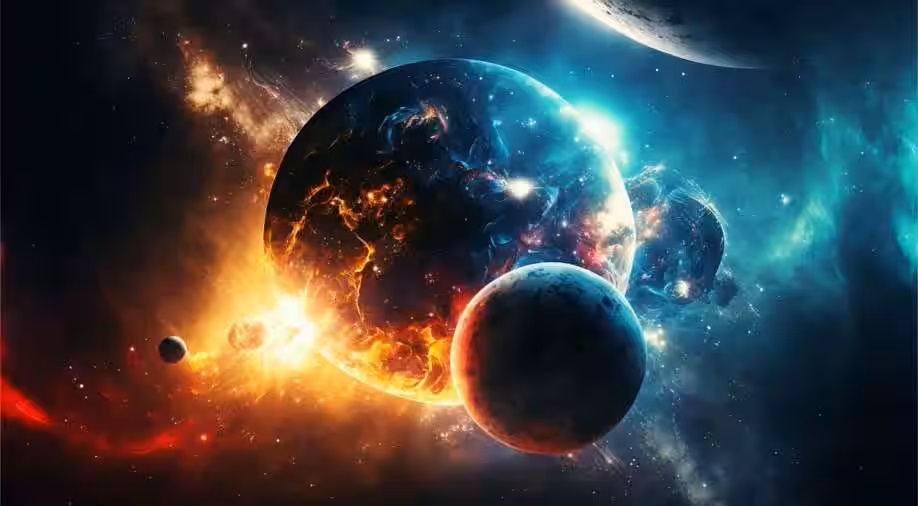The remnants of a huge planetary collision in a star system 3,600 light-years away have been detected by astronomers. They saw a doughnut-shaped cloud of vaporized rock and water using NASA spacecraft, which may indicate the collision of two ice planets. This finding might shed light on how planets form and how new worlds are created.
Finding evidence of the fallout from a massive planetary collision in a far-off star system 3,600 light-years away has surprised astronomers.
This incredible event, which involves the rapid collision of two large frozen planets, has produced a unique cloud in the shape of a doughnut that is made up of vaporized rock and water.
Finding the cosmic collision
The utilization of NASA spacecraft intended to search the skies for asteroids allowed for the discovery of these results. According to the New Scientist, this celestial collision is more than simply a spectacular show; it is a rare chance to see the birth of a new world in real time and possibly solve some of the mysteries surrounding planet creation.
A group of astronomers, united by a single person’s curiosity, initiated this ground-breaking investigation after noticing the unusual behavior of a star known as ASASSN-21 qj. 3,600 light-years away from Earth, this star caught the attention of experts all around the world with its unusual pattern.
The study’s co-lead, Matthew Kenworthy, a researcher at Leiden University, described the fortunate finding. He said, “An astronomer on social media noted that the star’s optical dimming occurred more than a thousand days before its infrared brightness increased. I saw right away that this was a strange occurrence. This observation caught me completely off guard, to be honest.”
The group of astronomers methodically tracked the brightness evolution of ASASSN-21 qj over a two-year period of observation. On October 11, the result of their investigation was published in the journal Nature.
According to Live Science, in order to understand the nature of the collision, the planets involved in ASASSN-21 qj most likely came together to form a single object after the impact. Computer models and computations were used to support this claim. Co-lead author and University of Bristol researcher Simon Lock expounded, saying, “Our computer models and calculations indicate the temperature and size of the glowing material, as well as the amount of time the glow has lasted, is consistent with the collision of two ice giant exoplanets.”
Astronomers are still keeping a careful eye on the aftermath of the planetary collision with ASASSN-21 qj. They predict that the debris cloud will spread over the ensuing years along the orbits of the planets that were destroyed in the cataclysmic catastrophe.



